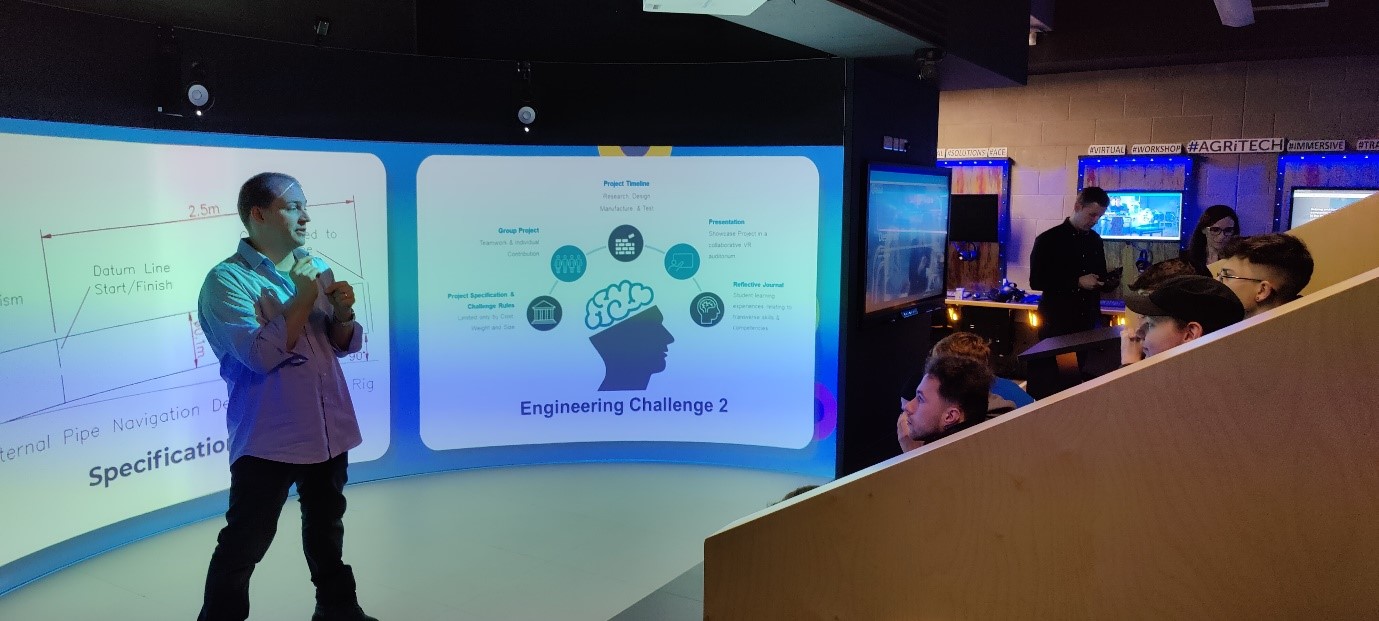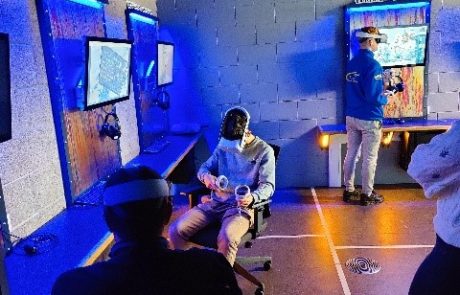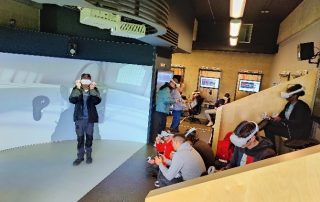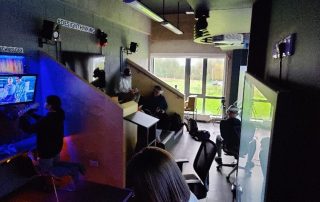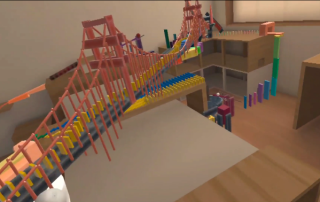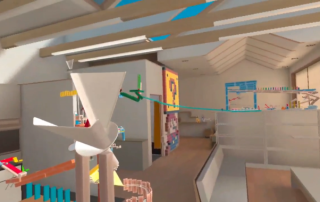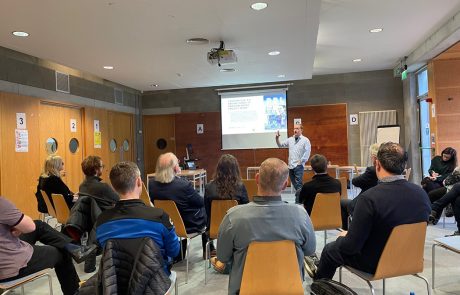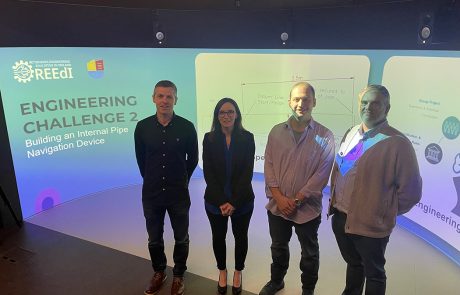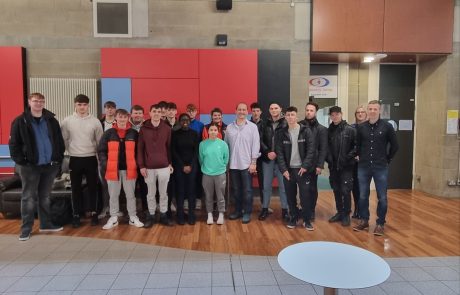Programme Highlights
Student VR Induction
REEdI/MTU officially welcomed the first cohort of Mechanical and Manufacturing Engineering students in 2022. This innovative program has been designed to give students an immersive learning experience using the latest AR/VR/MR/XR technologies. As part of this exciting new initiative, all enrolled students received their own dedicated VR headset to use throughout their studies – giving them access to a world-class VR engineering curriculum that is tailored for success in today’s rapidly changing technological landscape. They will be able to experience engineering in a whole new way, using cutting-edge technology to explore complex concepts and solve challenging problems. By combining technologies with our expert teaching staff and industry partnerships, REEdI will equip them with the skills and knowledge required to succeed in the field of engineering. Students and faculty staff have the unique opportunity to “virtually” work on real-world projects, collaborate with other students and industry partners. By embracing the latest in technology and teaching methods, we are providing our students with a truly unique and valuable educational experience that will set them up for success in their future careers.
As part of their introduction to immersive technologies, students were tasked to complete Engineering Challenge 1 using their VR headset. The challenge was based around the Rube-Goldberg machine that accomplishes a relatively simple task in an overly complicated fashion. Students were given a starting point and an end point in a virtual room, and asked to traverse it an any way the wished. Certain criteria had to be met – e.g. using a catapult or a pendulum – but the rest was up to their imagination, and engineering skills. To say we were impressed by the creativity and ingenuity that the students brought to this challenge would be an understatement. Their creations were truly amazing, and it was fascinating to see how they approached the problem in such different ways. What set this apart was that it allowed the students to use their creativity and engineering skills in a fun and engaging way. Overall feedback from the students on the use of VR in Engineering Education has been hugely positive.
Engineering Challenge 1
As part of their introduction to immersive technologies, students were tasked to complete Engineering Challenge 1 using their VR headset. The challenge was based around the Rube-Goldberg machine that accomplishes a relatively simple task in an overly complicated fashion. Students were given a starting point and an end point in a virtual room, and asked to traverse it an any way the wished. Certain criteria had to be met – e.g. using a catapult or a pendulum – but the rest was up to their imagination, and engineering skills. To say we were impressed by the creativity and ingenuity that the students brought to this challenge would be an understatement. Their creations were truly amazing, and it was fascinating to see how they approached the problem in such different ways. What set this apart was that it allowed the students to use their creativity and engineering skills in a fun and engaging way. Overall feedback from the students on the use of VR in Engineering Education has been hugely positive.
REEdI Welcomes International Expert in Engineering Education
In January, the REEdI team welcomed Professor Euan Lindsay as part of an international benchmarking and knowledge sharing visit. Professor Lindsay is a Professor of Problem Based Learning (PBL) and Digitalisation in Engineering Education at the Aalborg Centre for Problem Based Learning in Engineering Science and Sustainability (UCPBL) at the University of Aalborg, Denmark. Professor Lindsay is renowned for his work in developing pioneering new models of engineering education which combine the authenticity of work- and problem-based learning with the flexibility of digitally enable curricula.
Day one of the visit kicked off with dedicated sessions for staff at MTU Kerry Campus focusing on reinventing engineering curricula, which included global case studies for where this was successfully achieved. This session gave staff a broad spectrum or menu of options and combinations of what is possible in innovation of engineering curricula. The was an extremely valuable session and it opened our eyes up to the different opportunities and more value-add approaches we can engage in when it comes to our student facing activities.
Day two was made up of a series of interactive and engaging student focused sessions. During the day, Professor Lindsay observed demonstrations of the REEdI student Engineers engineering challenge that they developed in virtual reality during Semester 1. This was a virtual Rube Goldberg Machine. The day also included a seminar on “The importance of Reflective Practise” for student engineers. From there, Professor Lindsay launched the Engineering Challenge Module for Semester 2. During this session, Professor Lindsay shared with our pioneer cohort that their “ability to communicate through video and virtual reality will be an increasingly important skill for engineers in the future, and I’m not aware of any other program that makes this skill such a core part of the curriculum. The ability to communicate natively in three dimensions, not just two, is going to be a significant advantage for this cohort as they practice as professional engineers” .
The final day opened with a networking event and an open seminar for staff and students on “Why Problem Based Learning in Engineering Education”. From there, the REEdI team accompanied Professor Lindsay to one of our Industry partners- Liebherr Container Cranes, who hosted a tour of their impressive manufacturing site. During the visit, the team at Liebherr got to hear Professor Lindsay’s take on digital twins in engineering education. The benchmarking visit concluded with a dedicated session on how REEdI plan on utilising VR in Semester 3 as part of our Student Engineers soft skills development.
Engineering Challenge 2
Professor Euan Lindsay (Aalborg University) visited MTU Kerry and officially launched Engineering Challenge 2. The REEdI students have been tasked with building an internal pipe navigation device. The ‘device’ may be of any construction and propulsion method, limited only by cost, weight and size, within the specified challenge rules. Similar mechanisms are used in real-world applications to help pinpoint blockages or damage in difficult-to-access areas of piping. The professor’s visit was not only to announce the challenge, but also to inspire and excite the students about the potential of this project. To date, the students have shown fantastic enthusiasm in developing prototype solutions and are eager to make a positive contribution to the engineering field.
